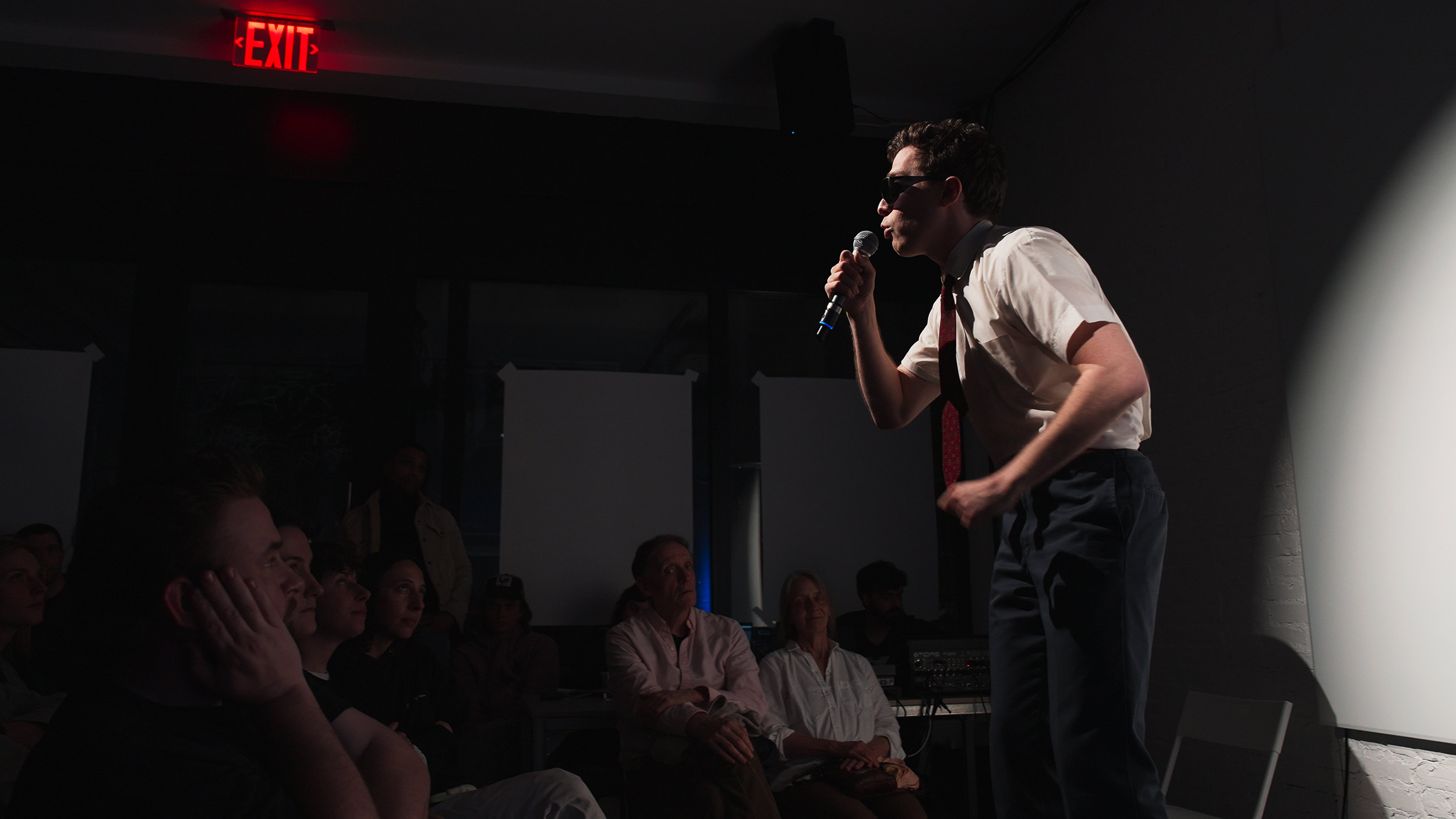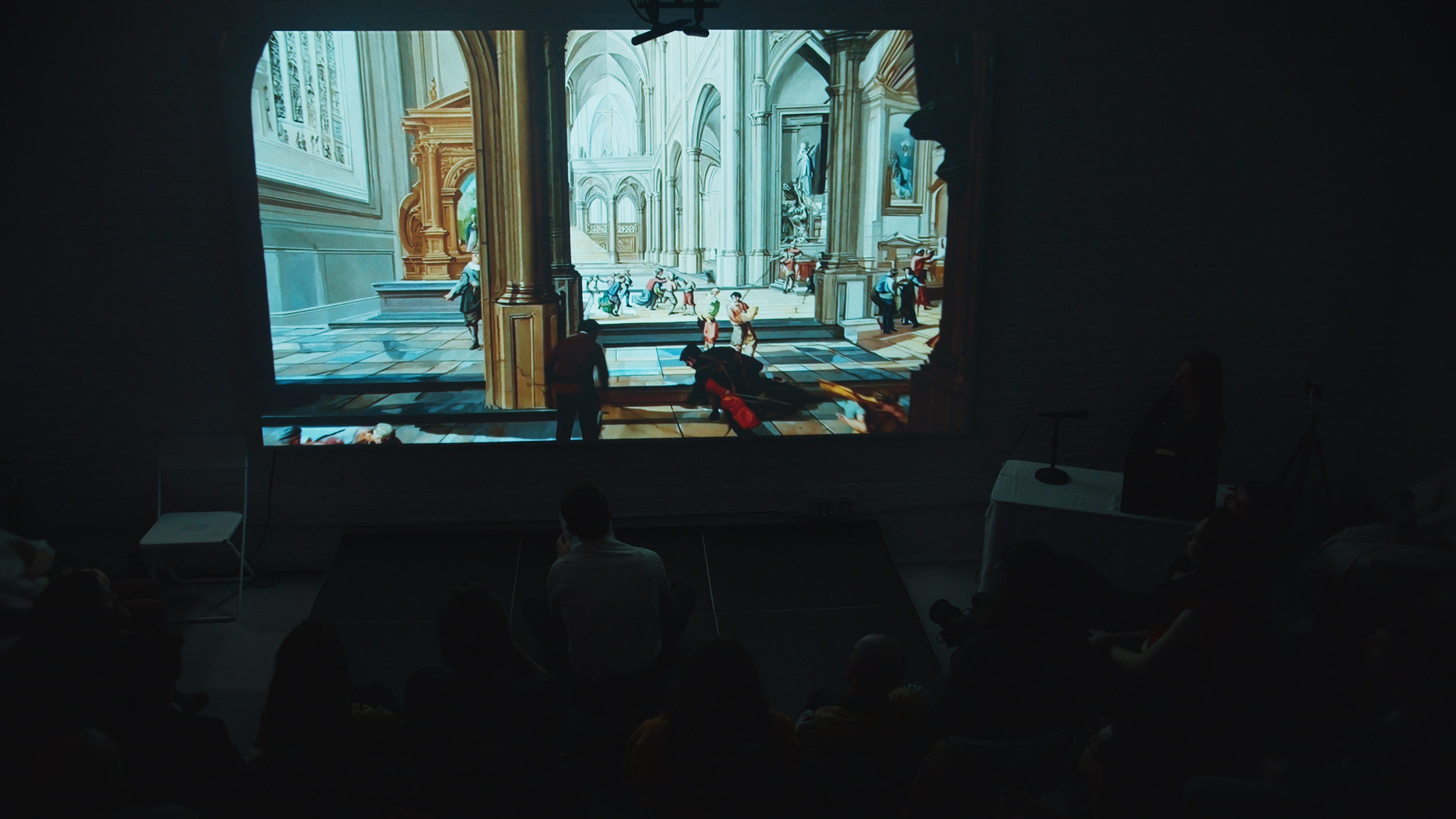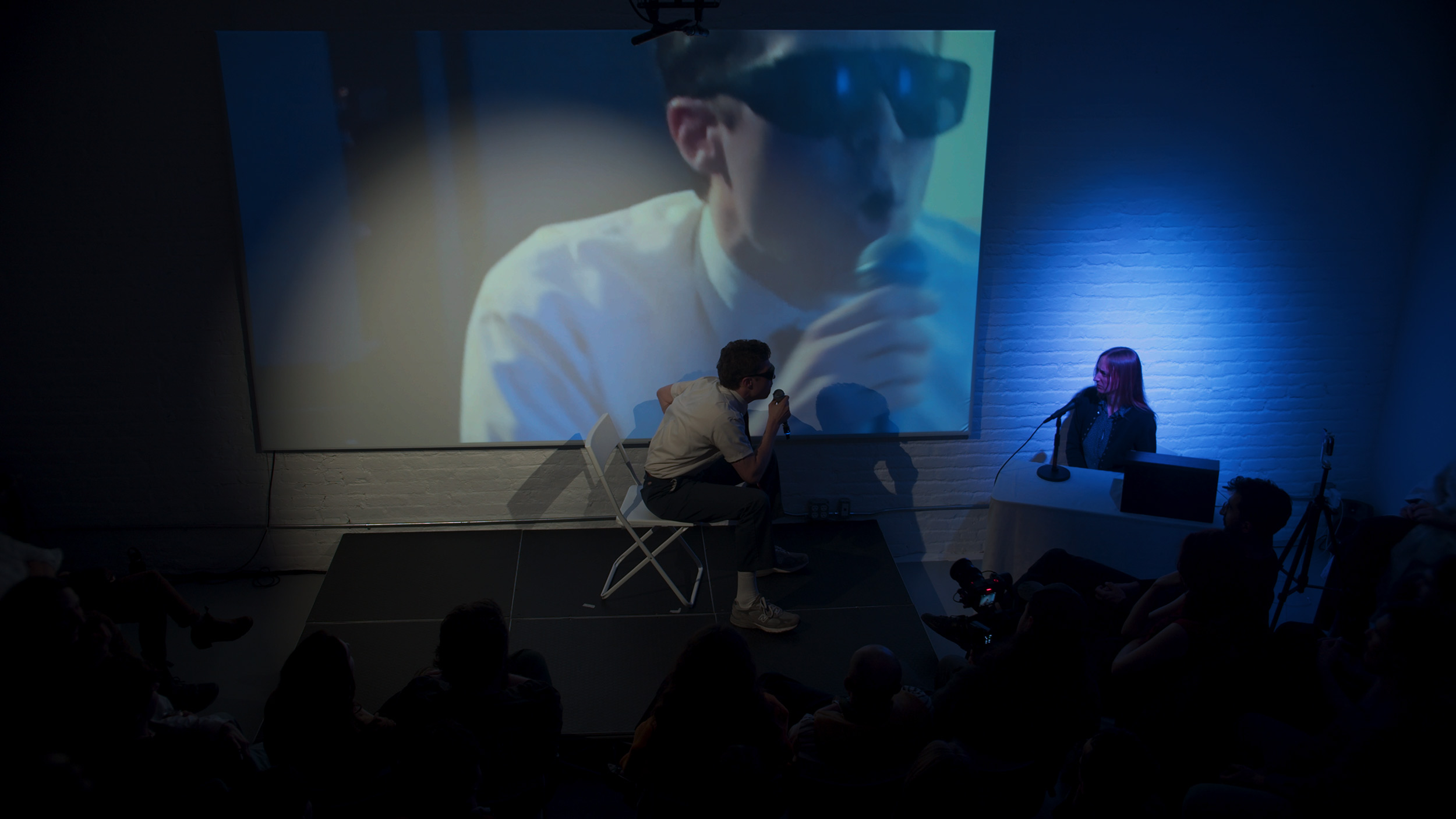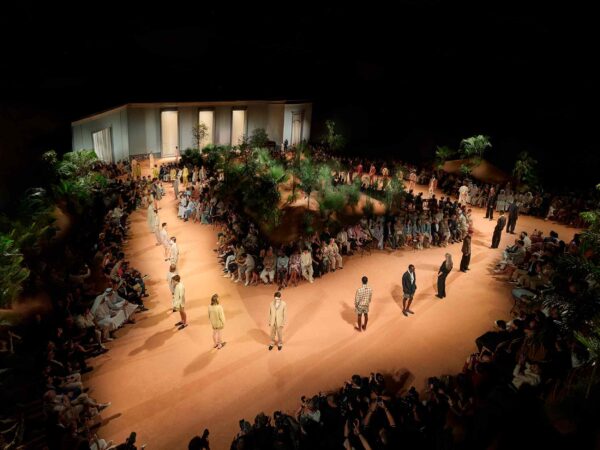In a sermon-performance equal parts satire and sacrament, 'Images' asks what it means to renounce the screen—and whether doing so is even possible
On Easter Sunday, I shuffled into EARTH, the New York arts space run by Annika Kuhlmann, Christopher Kulendran Thomas, and Dean Kissick. Just like a crowded church, every seat was taken. So I stood in the back, pressed against the wall.
Images—written by Gideon Jacobs and directed by Ruby McCollister—sits somewhere between a reading and a play. Jacobs performs as Father Bartholomew Mary, a blind preacher and Second Commandment fundamentalist. The show emerged after Kissick saw Jacobs deliver a reading of his unfinished novel in character and invited him to build a performance around the iconoclast preacher for EARTH.
Jacobs has previously argued that we are living in a time of image crisis. “I think we are living entirely in the realm of arrows, as opposed to spending some of our lives in the realm the arrows are pointing to.” And Images is a meticulously designed screed against these arrows. The performance is divided into four parts: an opening sermon, a guided meditation, an interview, and a closing homily.
Cassandra Jenkins plays the opening hymn on keyboard and the crowd in EARTH quiets. As Jacobs paces the stage, he preaches against the tyranny of the image in a Southern drawl that brings to mind Foghorn Leghorn. He links the Fall in Genesis to the development of the self-image—our self-awareness as evil knowledge, leading us down the slippery slope of abstraction, far away from the naked one-to-oneness of Eden.
Father Bartholomew Mary instructs the audience to take out their phones and select a photo from their camera roll. On the count of three, we’re told to delete it, in a sacrament of renunciation. Then, we’re told to open our “recently deleted” folder and delete it again; this time for good. One, two, three—poof. I chose to delete an old screenshot of an email, too squeamish to sacrifice a selfie without pre-vetting. “Take your phone case off,” he says. “Now turn it over. Look at the logo.” An apple with a bite taken out of it. The forbidden fruit, branded on my black box (though of course an Android user might not feel the same sting.)
The meditation portion centers on a painting of a Beeldenstorm—a wave of Protestant iconoclasm in 16th-century Europe. A video, made by artist Jak Ritger, shows the painting hanging in a gallery. The camera zooms in, and the image becomes animated by AI: blurry, spectral figures smash Catholic relics onto the church floor. Jacobs delivers a monologue, but I find myself zoning out, transfixed by the uncanny AI animations. They’re indecipherable, yet unmistakably human. Gestures that evoke anxious spirits, briefly embodied before jumping to another host.
Next is a faux interview between Father Mary and television journalist Veronica Thomas, played by Emily Allan. A live feed of Jacobs’ face, projected in close-up behind him, gives the scene a surreal doubling effect. Allan’s line of questioning grows increasingly personal, eventually forcing Father Mary to squirm and storm off stage. This may allude, obliquely, to Jacobs’ real-life past. As a child actor, he played Kevin’s older brother Buzz in Home Alone 4. What better origin story for an anti-image extremist than a former child star, haunted by his own disembodied likeness?
“A neo-Luddite movement is gathering steam amongst the screen-sick. But can reverting to flip phones rescue us from the tyranny of images?”
In the final monologue, Father Mary preaches on the Tower of Babel: how those in the tower kept rising higher and higher in an upward spiral, yet their view of the ground never changed. They are like us, both stuck in place and dislocated from the terrestrial. Mid-homily, two unfamiliar figures in black walk into the venue from the street. At first, I think they’re just late arrivals. But as they march onto the stage and forcibly remove Father Mary, kicking and screaming, it’s clear they’re part of the show. The audience sits in silence. Then, Jacobs reappears through the front door, and the performance is over.
It’s unclear who the goth-like figures are meant to represent. Tech overlords? Recalcitrant zoomers? Handymen of Satan? Whoever they are, Father Bartholomew Mary appears ill-equipped to confront them. His words fall on deaf ears. In his recent essay for Los Angles Review of Books, Jacobs suggests a possible political solution to the image crisis, a campaign “against those who control what is trending.” Downtown artist August Lamm has recently advocated for getting a dumb phone and going offline completely. A neo-Luddite movement is gathering steam amongst the screen-sick. But can reverting to flip phones rescue us from the tyranny of images? I’m not so sure.
A few hours after the performance, Pope Francis died. When I was told of the news, the first image that came to mind was that viral AI photo of him in a white puffer jacket. I remember it clearly, because it was the first AI image I ever mistook as real, scrolling past it on my feed without a second thought towards its veracity. Months later, a friend pointed out I’d been duped. As The Verge wrote in its headline: The swagged-out pope is an AI fake—and an early glimpse of a new reality.
But maybe we need such a rupture in our consciousness. If the unifying image-as-reality falls, then, finally, a different perspective can form. A new kind of image-literacy, based more on vibes than certainty. Where a picture of the Pope in head-to-toe Balenciaga is neither immediately fake nor real—but a secret third thing.























